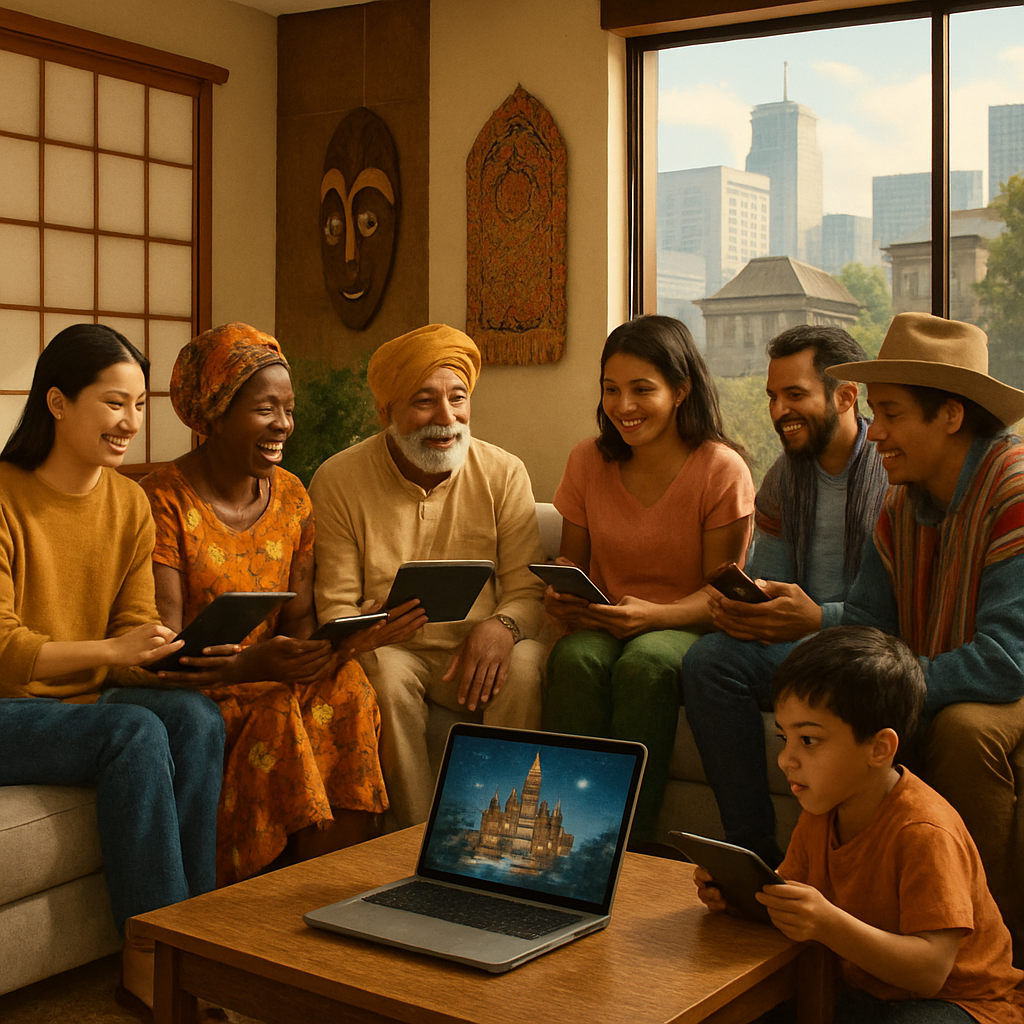
Digital storytelling has undeniably become a global phenomenon, weaving itself into the cultural fabric of societies around the world. This dynamic form of storytelling, powered by the internet and digital technology, has transformed the way stories are told, shared, and experienced. And let’s face it, who hasn’t been captivated by a gripping podcast or an interactive online narrative that just won’t let go of your imagination?
The Digital Storytelling Boom
Digital storytelling isn’t just a new way to tell stories it’s a revolution in how we connect with each other. From podcasts to interactive media, the rise of digital storytelling is shaping cultural narratives in ways that we couldn’t have imagined a few decades ago. What makes this so fascinating is the sheer diversity of voices and perspectives it brings to the table. Unlike traditional media, digital platforms have lowered the barrier of entry, allowing virtually anyone with an internet connection to share their stories. It’s like a digital campfire where everyone, from a seasoned journalist to a teenager with a smartphone, has a chance to share their tale.
Take, for instance, the explosion of podcasts over the past decade. Podcasts have turned into something of a cultural staple, with nearly half of Americans having listened to one, according to a study by Edison Research. What started as a niche hobbyist activity has evolved into a mainstream medium. Shows like “Serial” by Sarah Koenig, which delves into true crime stories, have captured the public’s attention, proving that there’s a voracious appetite for engaging storytelling in this format. It’s not just about the stories themselves but how they’re told; the pacing, the music, and the sound design all play a role in creating a captivating narrative experience.
The Global Reach of Digital Storytelling
It’s not just the U.S.; digital storytelling is leaving its mark across the globe. In Africa, for instance, mobile technology is at the forefront of this movement. Platforms like “Storymoja” in Kenya provide a space for local writers to publish their work digitally, reaching audiences far beyond their own borders. This is crucial because it gives a voice to stories that might otherwise be overlooked by mainstream media.
Similarly, in India, the storytelling platform “Terribly Tiny Tales” offers bite-sized stories that resonate with young audiences, leveraging the brevity that social media demands. The stories often reflect the nuances of modern Indian life touching upon themes of love, ambition, and the struggle between tradition and modernity.
I remember stumbling upon one such tale during a late-night scroll through Instagram. It was a short, poignant piece about a father-daughter relationship that left me reflecting on my own family ties. It’s surprising how impactful a few well-chosen words can be, right? It’s these moments that showcase the power of digital storytelling to create deep connections with audiences.
Challenges and Opportunities
Now, with every new development, there are bound to be challenges. One can’t ignore the issues of digital literacy and access. While digital storytelling democratizes content creation, it also highlights the digital divide. Not everyone around the world has the same access to the internet or the skills needed to navigate digital platforms. And then there’s the issue of content saturation. With so many stories vying for attention, how does one stand out? It’s a bit like trying to hear a single voice in a crowded room.
That said, the opportunities are immense. The interactive nature of digital storytelling allows for innovation that traditional media simply can’t match. Consider the game “Life is Strange” by Dontnod Entertainment, which combines narrative depth with player choice, resulting in a storytelling experience that’s both personal and interactive. Players become part of the story, influencing outcomes and exploring different narratives based on their decisions.
This interactivity can sometimes make you question your choices. I remember playing “Life is Strange” and agonizing over a decision that seemed trivial at first but later had significant consequences. It was a strange mix of excitement and dread, wondering how my choices would impact the storyline. It’s this level of engagement that keeps players coming back for more, eager to explore different narrative paths.
The Cultural Impact
The cultural impact of digital storytelling is profound. It’s not just about entertainment; it’s about shaping perceptions and fostering empathy. By exposing audiences to diverse perspectives, digital storytelling has the potential to break down stereotypes and promote cross-cultural understanding. Think about “Welcome to Night Vale,” a podcast that blends surreal humor with social commentary, challenging listeners to question the norms of their own societies.
This blending of entertainment and social issues is something that’s become increasingly prevalent in digital storytelling. It’s not just about telling a good story; it’s about making a statement, sparking conversation, and, sometimes, even inspiring change. There’s a sense of responsibility among storytellers to use their platforms thoughtfully, to create narratives that resonate and provoke thought.
Just recently, I stumbled across a digital art project on climate change that used virtual reality to transport users to a coral reef. The experience was both beautiful and sobering, immersing me in the vibrant ecosystem while highlighting the devastating effects of climate change. It was a stark reminder of the power of digital storytelling to not just entertain but also educate and inspire action.
Future Possibilities
Looking forward, the possibilities for digital storytelling are practically limitless. With advancements in technology such as virtual reality (VR) and augmented reality (AR), we are on the brink of a new era of immersive storytelling. Imagine stepping into a story, experiencing it from the inside, and being an active participant in its unfolding narrative.
Yet, with all these possibilities, there’s a lingering question: Will technology enhance storytelling, or will it become a distraction? There’s a fine line between immersive storytelling and sensory overload. It’s something creators will have to navigate carefully as they experiment with new forms of digital narratives.
But maybe that’s just the nature of storytelling itself constantly evolving, adapting to new technologies, yet always finding a way to connect with audiences on a human level. Whether through the written word, a podcast, or an interactive digital experience, storytelling remains at the heart of human culture, a timeless way to share experiences, ideas, and emotions.
Digital storytelling, with its global reach and innovative potential, is undoubtedly reshaping cultural narratives across the world. As technology continues to advance, there’s no telling where the next story might come from or how it will be told. But one thing is certain: as long as there are stories to tell, there will be eager listeners ready to embark on the journey.

